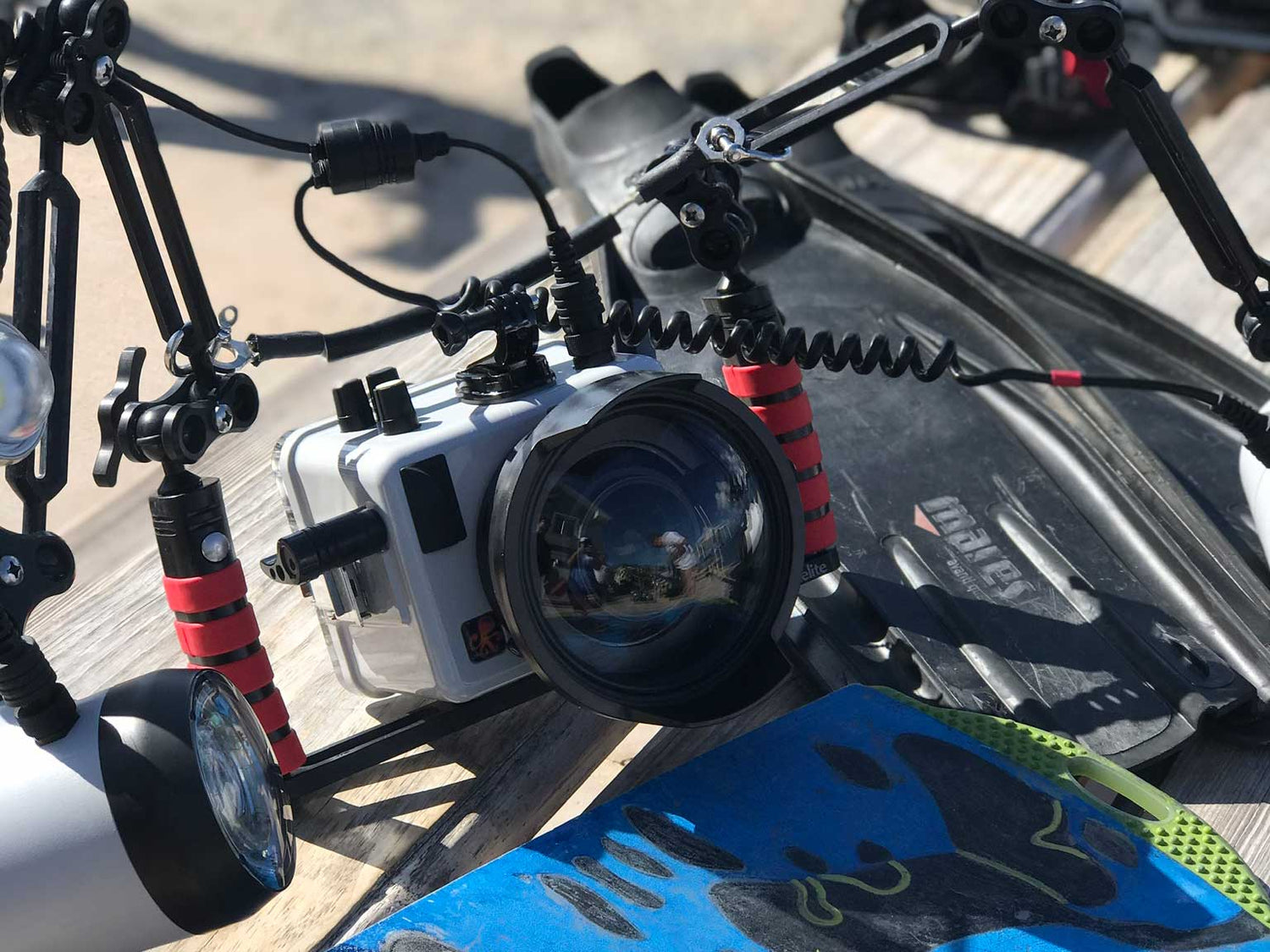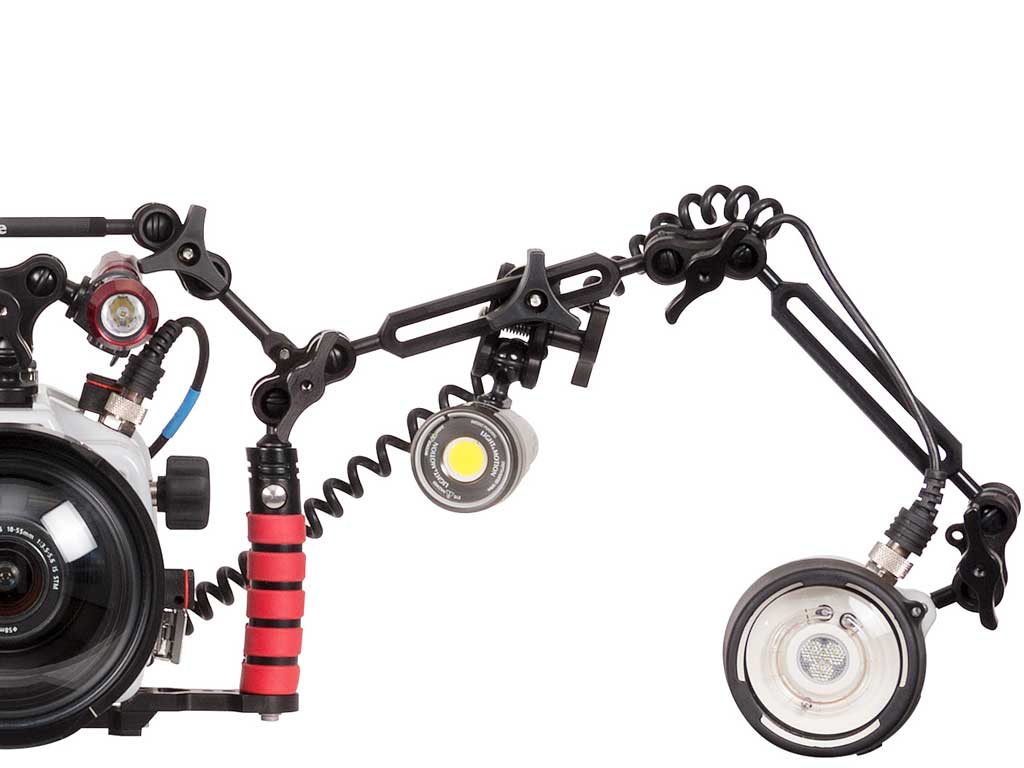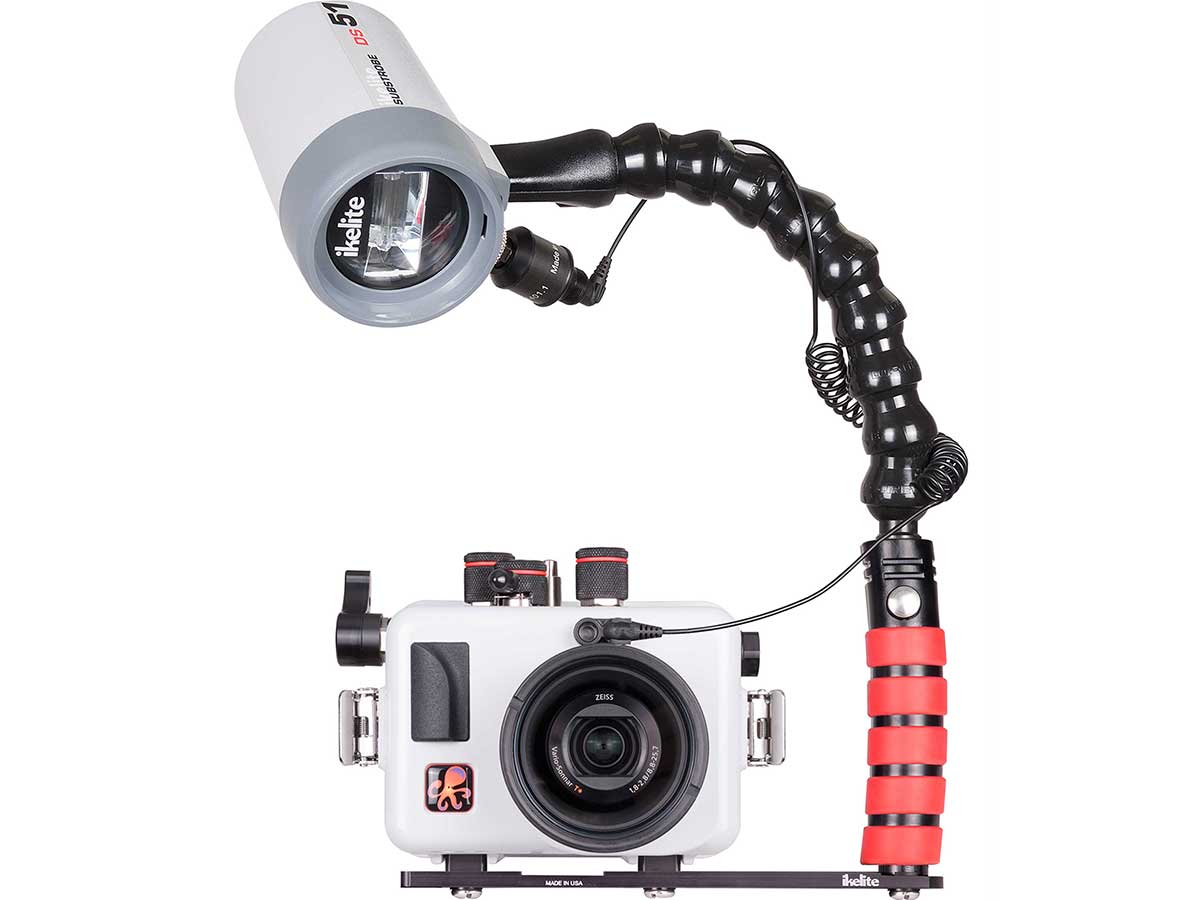Like all photographic gear, your camera housing and lighting require a little extra attention and maintenance. Here's a quick run-down of things to remember on your next dive.
Before the Trip
- Charge camera, strobe, and video light batteries.
- Check your camera settings against the requirements in your housing and/or TTL converter's instruction manual(s).
- Set up your complete system and take a few test photos. Upload the test photos to the device you will be traveling with and open them to make sure you have all of the latest software and firmware updates.
- Make sure you have spare o-rings and a spare fiber optic or electrical sync cord. Spare camera batteries can also be a major convenience on a trip with afternoon or evening dives.

Don't be that diver missing from breakfast because you're putting your gear together at the last minute. Get everything set up and take a test shot before you go to bed and sleep easy knowing that you won't be cursing a fatal mistake on the first dive of the day.
Night Before the Dive
- Remove the lens cap, lanyard or strap, and any accessory add-ons from the camera.
- Install fully charged batteries and turn everything on. Check ready lights and LCD screens for any warning signs.
- Check your camera's recording resolution.
- Offload any images and video that are on your memory card. Clear it off and make sure you have enough available storage space for the shooting you plan to do.
- Assemble everything in a cool, dry environment- ideally an air conditioned room. To prevent fogging due to trapped moisture, avoid humidity when opening and closing your housing.
- Connect everything and fire a test shot at something close by. If using strobes, make sure the strobes fire when you take a photo. Look at the photo to confirm that the strobes fired at the right time. Not sure that they're working? Here are some troubleshooting tips.
- If you have a vacuum system, draw a vacuum on the housing and write down the reading on the gauge. Remove the vacuum pump.
Before the Dive
- If you have a vacuum system, attach the vacuum pump and check that the gauge shows the same reading as the night before.
- Turn on your camera and strobes.
- Pre-set your initial exposure settings (aperture, shutter speed, and ISO) for the day's dive. These will depend on where you're shooting and what you're shooting. Check out our Camera Settings Cheat Sheets for a place to start.
- Slowly submerge your system in a clean rinse tank, watching for small bubbles which may indicate a minor leak. Remove the system from the water and confirm that everything is perfectly dry inside.

This is not the time to be navigating your camera's menus trying to turn off the eye sensor or figure out how to make it recognize your strobes. Do make sure that your camera and strobes are on and that your initial exposure settings are dialed in before you hit the water.
On the Dive
- Watch your system as you submerge it and continue to visually monitor the system through the back of the housing as you descend.
- Use your free hand to gently sweep away any bubbles clinging to the front of the dome or flat port. Check for bubbles periodically throughout the dive.
- If you see signs of water intrusion, hold the housing with its largest air space pointed downward. This is usually either the bottom of the housing or the dome port. Ascend to the surface slowly and safely. Never risk your health to save your camera.
After the Dive
- If there's a fresh water hose, quickly flush the push buttons with fresh running water after the dive.
- If there's no hose, give the housing a quick dip in the camera rinse tank. Never leave your gear in the rinse tank—damage can be caused by being banged around by the boat or other people's gear.
- If using a wide angle wet lens, dry the front of the lens with a clean microfiber towel as soon as possible. Leaving water to dry on the lens can cause damage the coating and cause permanent spotting.
- Protect your system from sun, heat, and other divers whenever possible.

Watch those housings, Gary. Keeping an eye on your gear as you descend is the best way to mitigate your risk of accidental damage.
Before Storage
- Rinse your gear in fresh water. Quickly work all of the controls while submerged in fresh water to flush out any salt deposits which may be left in the buttons and around the knobs.
- Dry everything with a clean, lint-free microfiber towel.
- Immediately after your last dive of the year is the best time to return your equipment for annual maintenance. Your gear will be ready for the next trip and you'll avoid the worry of tight turnaround times and expedited shipping fees.
- Charge your strobes and video lights between dives and prior to storage.
Additional Reading
When to Use a Compact 8" Dome Port Underwater
TTL Testing and Troubleshooting
Trade Up to the Dry Lock System
Cleaning a DS160 DS161 Battery Pack Toggle Locking Mechanism
Installing and Using a Vacuum System
Installing a Magnified Viewfinder













